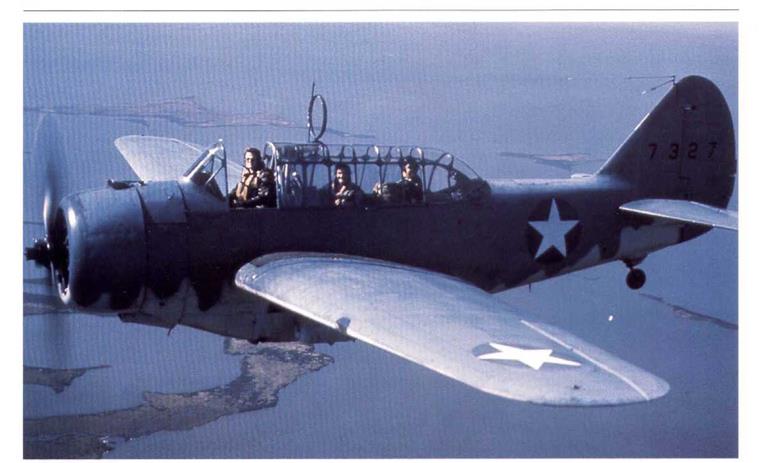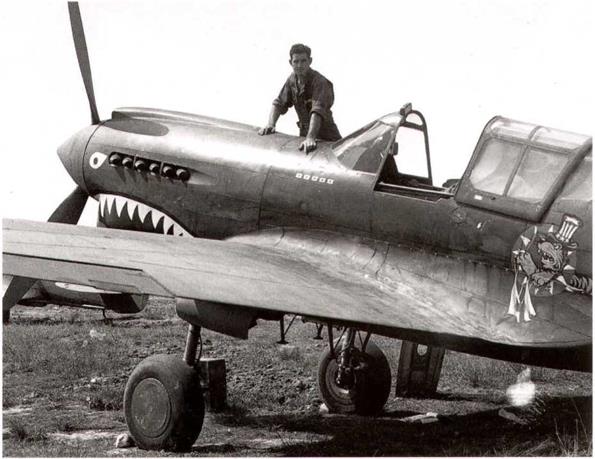Desert Camouflage for Martin Il-26s described by WF, July 31,1942
The Prod. Div. (WF) informed the Martin Omaha, Nebraska, plant of the paint scheme for use on B-26s destined for desert use. Sand shade enamel was to be used instead of, or over the existing Olive Drab shade, but there was no change to the Neutral Gray under surface color. All upper surface fabric-covered parts were to be painted with Sand color dope.
Exp. Eng. Sect. (WF) test camouflage on B-29 stainless steel wings, August 1,1942.
Tests were run by the Exp. Eng. Sect. (WF) to determine the value of camouflage finishes on stainless steel wings for B-29s. They found that camouflage finishes on stainless steel were equal to similar finishes on aluminum coated aluminum alloy. Their report also indicated that the methods used for cleaning the metal surfaces, prior to the application of paint, was satisfactory for stainless steel (note: B-29s did not use stainless steel for the production aircraft, because satisfactory aluminum alloys were available-author).
Douglas Company asked to delete “U. S. Army” lettering under the wings of all camouflaged aircraft, August 10,1942.
Wright Field requested the Douglas Company to delete the words “U. S. Army” from the underside of all camouflaged aircraft. They requested that immediate action be taken to remove this wording on the undersurfaces of camouflaged wings for models C-53, C-54, C – 54A, and C-74 airplanes (this was a very early mention of the C-74 – author).
T. O. 07-1-IB revision issued on August 15, 1942, covering use of Medium Green blotches, deletion of “U. S. Army” under wings and the use of decals for organization insignia.
A revised version, T. O.07-1-1B, was issued on August 15, 1942, and added paras. l.f.(l)(c) and revised paras 5.a., 6, and 7.e.
l. _f. Use of Special Color of Camouflage Materials.
(1) The basic camouflage scheme in permanent camouflage materials for Army Air Forces airplanes is as follows: **********************#*************#*#*$*******************************
(c) Medium green, shade No. 42 in splotches or patches along the leading edges, tips and trailing edees of the wing, vertical and horizontal stabilizers and rudders.
1. Application should be made so that the continuity in appearance of the wing, stabilizer, and rudder outlines
is broken.
2. The size of the splotches, or stripes should extend inward from the edges at various distances ranging from 0 to 20 per cent of the width of wing, stabilizer or rudder member.
5. Markings.
a. The markings for all military aircraft will be in accordance with Spec. 98-24105 (airplanes), or 99-2050 (lighter – than-air aircraft) except that on camouflaged airplanes the marking “U. S. Army” on the under surface of wing will be omitted.
6. Standard Insignia. – Standard military insignia will be placed and maintained on each airplane as outlined in Spec. 9824102, or Spec. 24114 (airplane camouflage) which includes the following:
a. The new insignia is a five pointed white star within a blue circle.
b. All rudder stripes will be eliminated and color of rudder will be the same as the upper surfaces of the fuselage except as noted in para. l. f.(l)(c).
c. Decalcomania transfers may be used if desired, (for application of decalcomanias on airplanes assigned to Air Service Command see T. O. No. 01-1-21.)
7. e. Decalcomania Insignia. – Where personnel are not available to print organization insignia in a satisfactory manner, the use of decalcomania insignia on airplanes is authorized. (Eland or sprav painting of the new Air Service Command Insignia is not authorized – see T. O. No. 01-1-21.) Owing to the local nature of their usage, however, it will be necessary for organizations (except the Air Service Command) desiring to use these transfers to obtain them by local purchase. Their application does not require skilled workmen. Instructions for applying decalcomanias are furnished by the manufacturer. They should be stored in a dry place where they will not be exposed to temperature above normal.
First production Lockheed F-5 haze painted, August 21, 1942.
The Prod. Eng. Sect (WF) told the Photo Lab. Exp. Eng. Sect. (WF) that the first production F-5 aircraft had been given a coat of haze paint, which had failed to meet expectations, possibly due to improper application. The Material Center (WF) had been made responsible for the testing this aircraft. Problems continued with the application of the haze paint to production F-5 aircraft and the in-flight results were very variable. It was thought that the properties of the original Cabot haze paint were responsible for the poor results, but testing done with haze paint produced by two other companies were also disappointing. Eglin Field eventually produced a Final Report on October 23, 1942, entitled “Test of Haze Paint” (see later in this chapter-author).
 North American 0-47A, 37-327, finished in Dark Olive Drab and Neutral Gray, is seen with the new insignia. These obsolete aircraft were used for coastal reconnaissance patrols until other aircraft were available. (USAF)
North American 0-47A, 37-327, finished in Dark Olive Drab and Neutral Gray, is seen with the new insignia. These obsolete aircraft were used for coastal reconnaissance patrols until other aircraft were available. (USAF)
|
|
Cuitiss P-40E. Close up view of Col. Robert L. Scott’s aircraft in China on September IS, 1942. This shows crew chief J. R. Hill pointing to Col. Scott’s five kills on the side of the airplane. By this lime the American Volunteer Group (AVGl had become the 23rd FG of the L4th AF in China. (USAF)
|
|
Curtiss C-46-CU, 41-5180, is one of the initial production model built as troop transports. This is aircraft no.21 of the first batch of 25. (llarry Gann)












